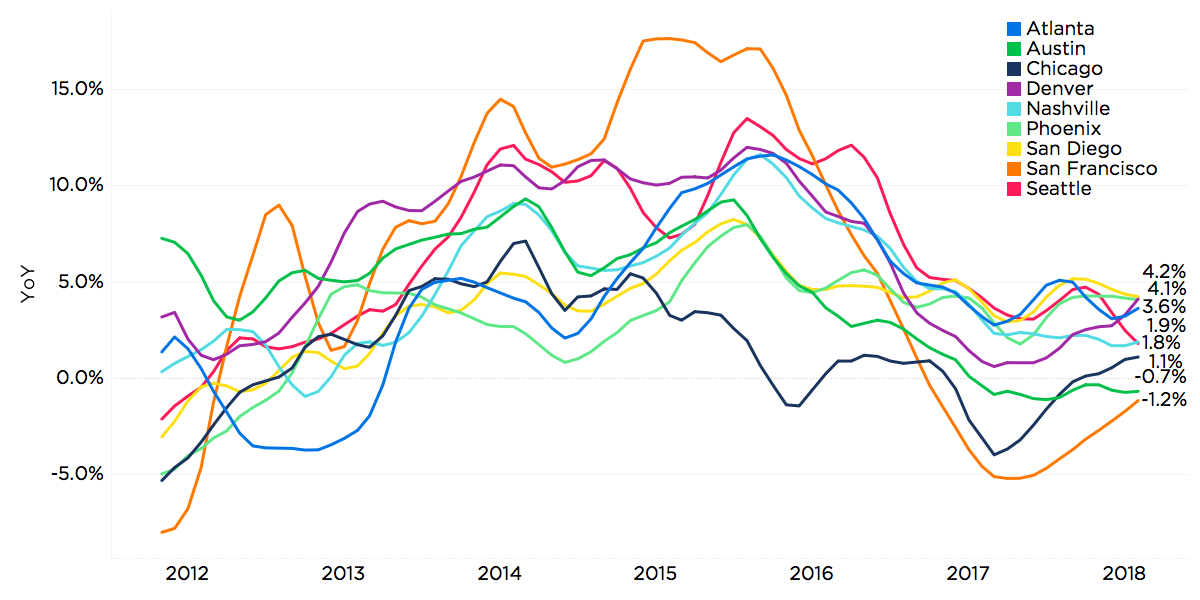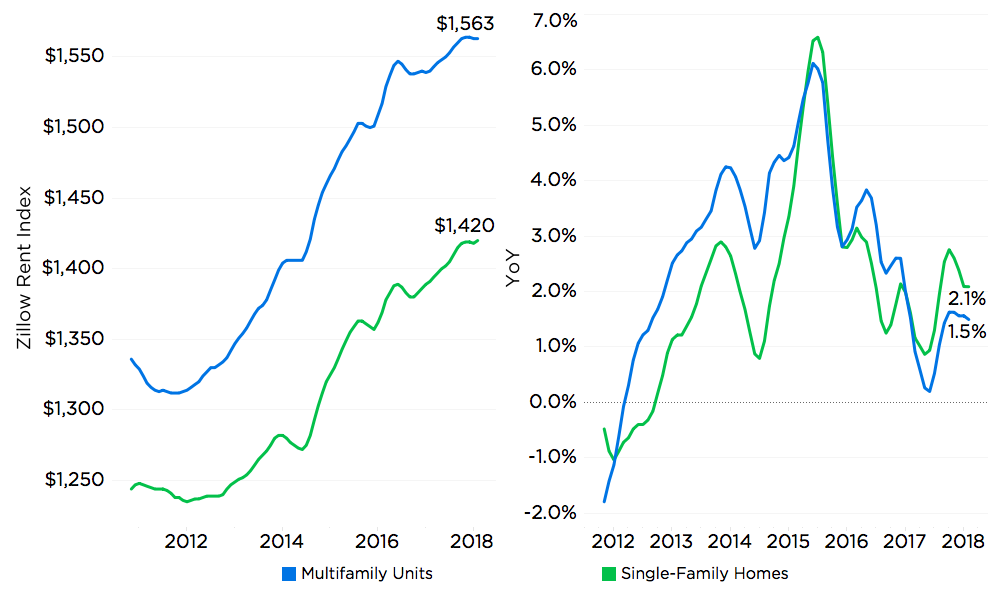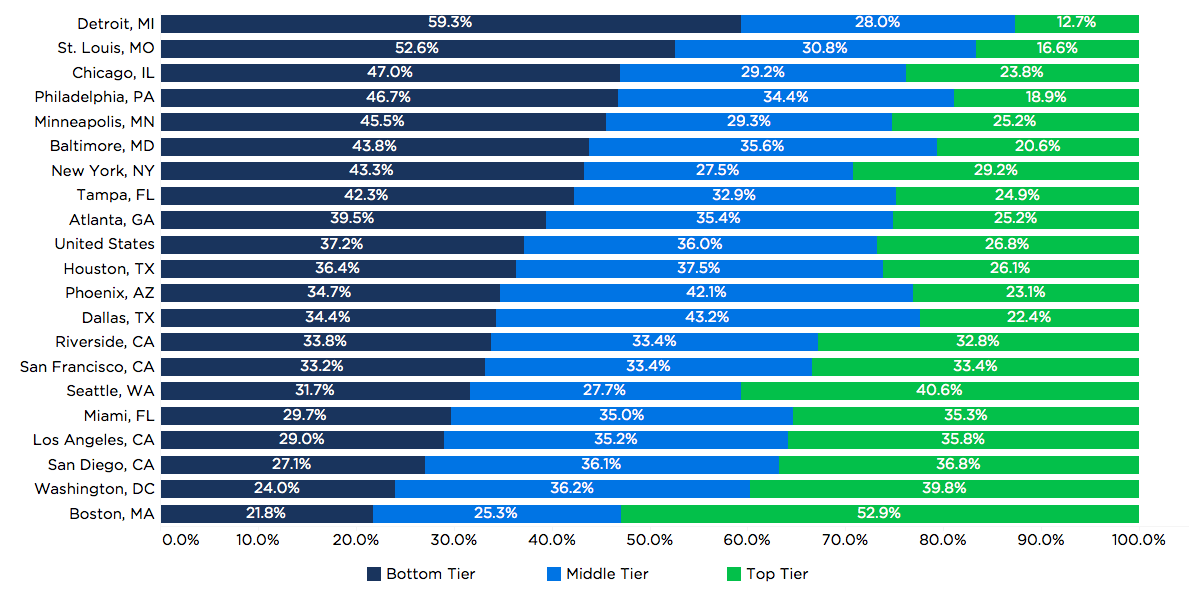Hot or Not: How to Navigate Your Rental Market

April 5, 2018
4 min read
In most markets across the nation, it’s a great time to be a landlord. After slowing in 2015, rent growth is starting to speed up again — but what does this mean in your area?
Your area’s dynamics can vary greatly from the nearest metropolitan area or even from the next city over. Understanding what drives these dynamics — including your market’s affordability, the rate of residential construction and regulation on that construction — helps you understand what’s in store for your investment.
Local dynamics can affect the profile of your renters, too. For example, as rent growth consumes more and more of their incomes, renters may start to double up, move farther away from the city centers where they work or even migrate to a new city altogether.
Dr. Skylar Olsen, senior managing economist at Zillow Group, recently hosted a webinar to discuss these dynamics, including how they’re affecting current markets and how to prepare for what the future holds in your market.
Drivers of heat in your market
National trends intersect with local trends to create your area’s unique rental climate. One of the biggest trends over the past few years has been the effect of new supply on rental growth.
Around 2015, new construction spiked in response to increased demand. Those new properties came online and took the pressure off nationally, slowing rent growth. Things are picking up again, though the rate varies for different metropolitan areas. And as you drill down into these areas, you might see variances between downtown and the outlying neighborhoods.
 Source: Zillow Rent Index (December 2017)
Source: Zillow Rent Index (December 2017)
Residential construction regulations may also affect your local market. What you can and can’t do in an area, such as single-family zoning requirements, building permits, lot size restrictions and the like, are all factors that could restrict building. Rent has grown in highly regulated areas because the pressure on the market remains.
Another factor is the number of active listings. More open rentals in your city or neighborhood means less competition and slowed rent growth. This is currently happening closer to the metro centers, where the density has allowed for building more units in larger multifamily buildings.
Single-family home trends
When the Great Recession hit in December 2007, it brought all new development to a standstill, and supply plummeted. But new construction for single-family homes dropped the most, dipping below where it was in the ’90s.
Today, more than 10 years later, permits for larger apartment buildings (five units or more) have returned to pre-recession levels. But single-family homes, though they’ve increased steadily, have yet to climb past the dip.
At the same time, household formation has picked up, and more households are looking for single-family homes as they age out of apartment living and need more space for their growing families. Buying a home is increasingly difficult, though, as saving for a down payment gets harder and inventory is low. Consequently, these households are remaining renters. In fact, renting single-family homes has become significantly more popular over the last 10 or more years.
Regardless of what’s happening in your local area, if you rent out a single-family home, your rent growth looks good both now and in the future. Rent appreciation for single family-homes is significantly outpacing that of apartments.
 Source: Zillow Mortgage Affordability, Zillow Rent Affordability (2017 Q4)
Source: Zillow Mortgage Affordability, Zillow Rent Affordability (2017 Q4)
Drivers of future demand
The main drivers of heat in the rental market are the continued quest for affordability and the accessibility of for-sale homes.
You may be one of the many who became a landlord by investing in a foreclosed home during the recession. This phenomenon is a key driver of the current rental market across the board, but especially in the bottom third of the market.
Single-family rentals are concentrated in the market’s bottom tier, and rental activity has increased there over the past decade. But this is also where the share of income spent on rent is the highest. This has put pressure on those trying to save to buy a house, leading to longer time in rentals for many.

Many are also moving to new, more affordable metropolitan areas. People who have lived in Los Angeles or New York City for some time are finding it no longer affordable, so they’re moving to areas like Pittsburgh, PA, or Raleigh, NC, where they can afford to live and even save some of their income.
Not only are people moving, but companies are also thinking about where they can relocate to take advantage of the migration and affordable conditions. If you’re a landlord in some of the areas where rent has grown the fastest, expect some slowdown over the next couple of years. But if you’re in one of the more affordable areas, competition for your rental — and, as a result, rent prices — will start to creep up.
Connect with us!
Learn how Zillow Rentals can help you reach your goals.
Stay informed. Stay ahead.
Access exclusive industry insights, market trends, and expert tips. Subscribe now to receive quarterly Zillow Rentals newsletters!